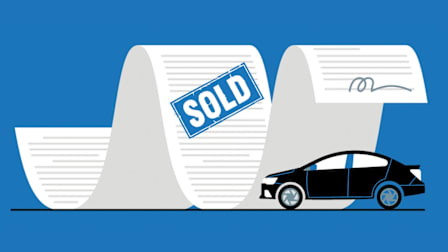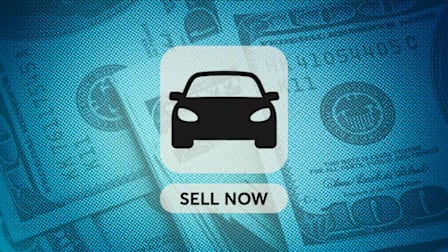How to Get More Money for Your Used Car
When you're ready to sell or trade, these expert tips will help you get the most for your vehicle

What to do with a car you don’t want anymore? You can trade it in for a new one, sell it to a dealer or to a private individual, or get a sight-unseen online offer for it.
Take an Instant Cash Offer
Best for: Paid-off, lower-mileage cars with a solid maintenance-record paper trail.
Pros: You’ll get an online offer within a few minutes that will be honored for several days and may be the most competitive option. In the CR survey, the majority of people who sold their car to Carvana got more for it than they expected, and most who sold to CarMax got about what they expected.
Cons: You might get more money selling an older, high-mileage car to an individual buyer.
What to do: It’s as easy as entering your license plate number or vehicle identification number (VIN) and answering a few simple questions about your car’s condition.
Satisfaction rate: 62 percent
Sell It to an Individual
Best for: Older or higher-mileage cars that are paid off and in good condition.
Pros: Selling to someone privately will probably get the highest price for an older car. CR members who sold to individuals in person were far more satisfied than those who sold to individuals online.
Cons: Higher potential for having to haggle and handle difficult buyers, no-shows, and scammers.
What to do: Always meet strangers in a secure public location, such as a gas station or supermarket parking lot. Ibbotson says that shelling out for professional detailing may result in a higher price in this scenario.
Satisfaction rate: 58 percent
Sell It to a Dealer
Best for: Newer used cars, lower-priced models in high demand (those that sell for $22,000 or less), cars worth less than their loan balance.
Pros: You’ll get roughly the same amount of money as a trade-in, but unlike a trade-in, you don’t have to sell to the dealer you’re buying another car from.
Cons: If you have an older, higher-mileage, or low-demand car, there are other ways to get more money. Also, you’ll probably have to make an in-person appraisal appointment.
What to do: Go to multiple dealers to find the one offering the best price. (The dealership that serviced the car should be able to offer a price by phone.)
Satisfaction rate: 51 percent
Trade It In
Best for: Newer used cars that are still being paid off.
Pros: This can be the fastest way to get rid of your old car and get a new one with upgraded safety and convenience features; the trade-in value will also help defray the cost of financing the new car purchase. In some states, you’ll pay sales tax only on the price of the new car minus the value of the trade-in.
Cons: Typically yields less money than selling to an individual. Most CR members who traded in got less than they expected, although sale price tended to be a lower priority.
What to do: Lock in the new-car price before negotiating the trade-in. Some dealers offset a good trade-in price by inflating the new-car purchase price.
Satisfaction rate: 34 percent
Editor’s Note: This article expands on the version that appeared in the August 2024 issue of Consumer Reports magazine.




















